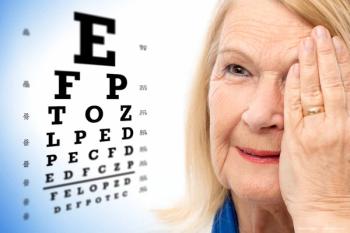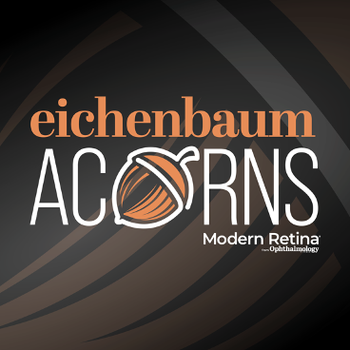
Consensus group redefines, standardizes AMD classifications
An internationally renowned working group of retina specialists, ocular imaging experts, and ocular pathologists have suggested standardizing definitions for age-related macular degeneration (AMD) and its subtypes.
An internationally renowned working group of retina specialists, ocular imaging experts, and ocular pathologists have suggested standardizing definitions for age-related macular degeneration (AMD) and its subtypes.
The group, called the Consensus on Neovascular AMD Nomenclature (CONAN), convened and collaborated with outside experts over the course of 3 years to create consistent definitions of AMD, its components, and its sub-classifications.1 (It should be noted that there is also the Beckman Classification, which was proposed in 2013).
The CONAN working group deemed standardization necessary because advances in retinal imaging have revealed other forms of AMD and nuances in pathology that previous definitions did not reflect.
Recommendations and updated definitions
CONAN defines AMD as “a process by which the structure and function of the macula deteriorates over time in association with distinguishing signs and symptoms that typically become evident clinically beyond 50 years of age and do not seem to be secondary to other processes such as pathologic myopia, central serous chorioretinopathy, monogenetic inherited retinal disease, chorioretinal uveitic syndromes or infections, or trauma.”
The group defined macular neovascularization (MNV) as “an invasion by vascular and associated tissues into the outer retina, subretinal space, or sub-retinal pigment epithelial (RPE) space in varying combinations,” with three subtypes:
- Type 1 MNV is an ingrowth of vessels initially from the choriocapillaris into the sub-RPE space
- Type 2 MNV refers to the proliferation of new vessels arising from the choroid into the subretinal space
- Type 3 MNV refers to a downgrowth of vessels from the retinal circulation toward the outer retina (therefore, the term “choroidal neovascularization” is not accurate for this type of MNV)
CONAN noted there could be no “direct porting of the new terms to the old ones and vice versa exists because newer imaging technologies, such as OCT and OCT angiography, have an ability to detect abnormalities not imaged by color fundus photography or fluorescein angiography and have greater precision for many entities that are imaged using these technologies.”
For neovascular lesion nomenclature, the CONAN group proposed specific terms be used:
- Type 3 neovascularization is to be used when the vascular complex originates in the retina.
- Type 1 neovascularization is applied when the vessels originate from the choroid and remain under the RPE.
- Type 2 neovascularization is denoted if neovascularization that originates in the choroid breaks through the RPE to reach the subretinal space.
The CONAN group followed the lead of the Classification of Atrophy Meetings group and adapted their definitions for non-neovascular AMD to describe atrophy in the context of neovascular disease.
However, the group was unable to come to a consensus on all definitions, despite acknowledging that the current nomenclature must change.
For example, CONAN notes that the term “polypoidal choroidal vasculopathy” is imprecise because a polyp is not a vascular aberration-it’s a solid tissue growth. A new, more accurate term-aneurysmal type 1 neovascularization-was suggested to replace polypoidal choroidal vasculopathy, but the group could not reach an agreement beyond the general inaccuracy of the current term.
Importantly, CONAN notes that ocular coherence tomography (OCT) and OCT-angiography (OCT-A) should not replace fluorescein angiography or color photography; rather, OCT and OCT-A should be considered complimentary imaging, providing clinicians with additional data to help classify disease type and staging.
The group also recommends diagnosing AMD by patient and not by eye because measures to stave-off AMD development and progression, such as vitamin supplements, are given to the whole person.
Finally, the CONAN group acknowledges that to keep pace with advances in imaging modalities, these standardized definitions must be updated as clinician understanding of AMD pathology improves.
Clinical impact
As advances in retinal imaging have furthered the understanding of how AMD develops, progresses, and appears, the way researchers and clinicians speak about the disease must evolve with it.
The CONAN group recommends their definitions be immediately incorporated into future clinical trials and studies on AMD. The CONAN group believes that unifying the definitions will help researchers speak the same language across the literature, thereby assisting in comparing trial outcomes and reducing confusion.
Lastly, the group also believes an extension of the proposed terminology will be developed to describe disease severity in neovascular AMD.
References:
1. Spaide RF, Jaffe GJ, Sarraf D, et al. Consensus Nomenclature for Reporting Neovascular Age-Related Macular Degeneration Data: Consensus on Neovascular Age-Related Macular Degeneration Nomenclature Study Group. Ophthalmology 2019 Nov 14. pii: S0161-6420(19)32243-2. doi: 10.1016/j.ophtha.2019.11.004. [Epub ahead of print]
2. Ferris FL, Wilkinson CP, Bird A, et al. Clinical classification of ageârelated macular degeneration. Ophthalmology 2013; 120: 844–851.
Newsletter
Keep your retina practice on the forefront—subscribe for expert analysis and emerging trends in retinal disease management.












































